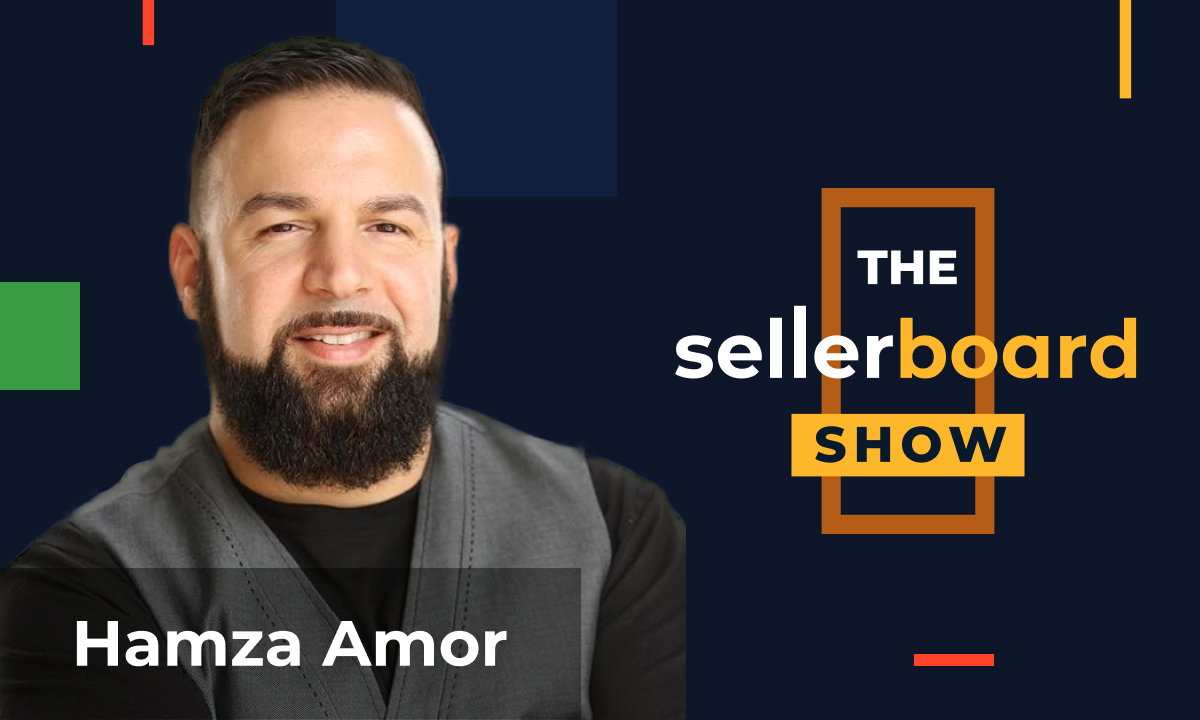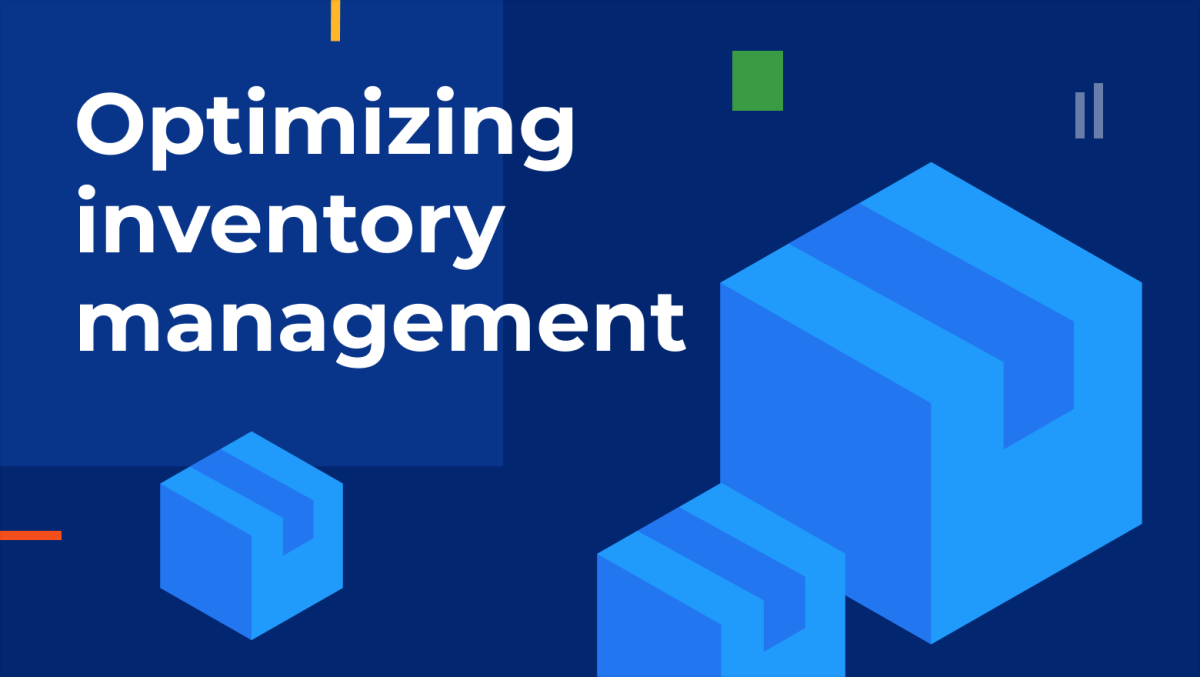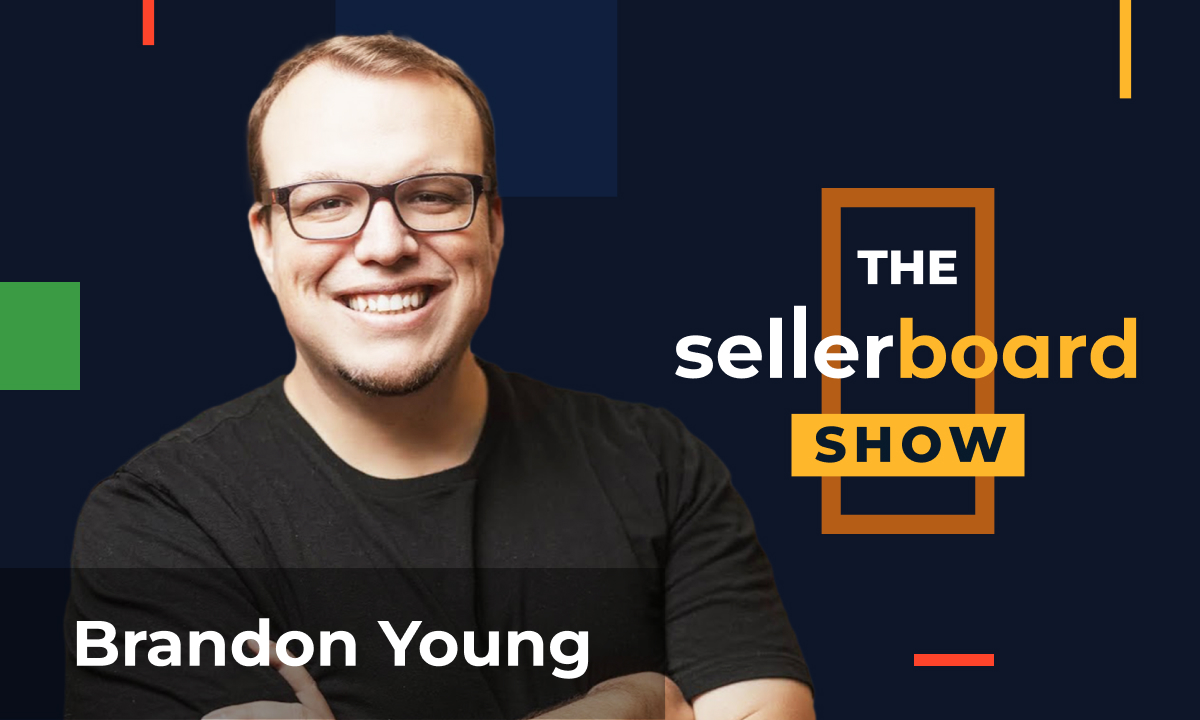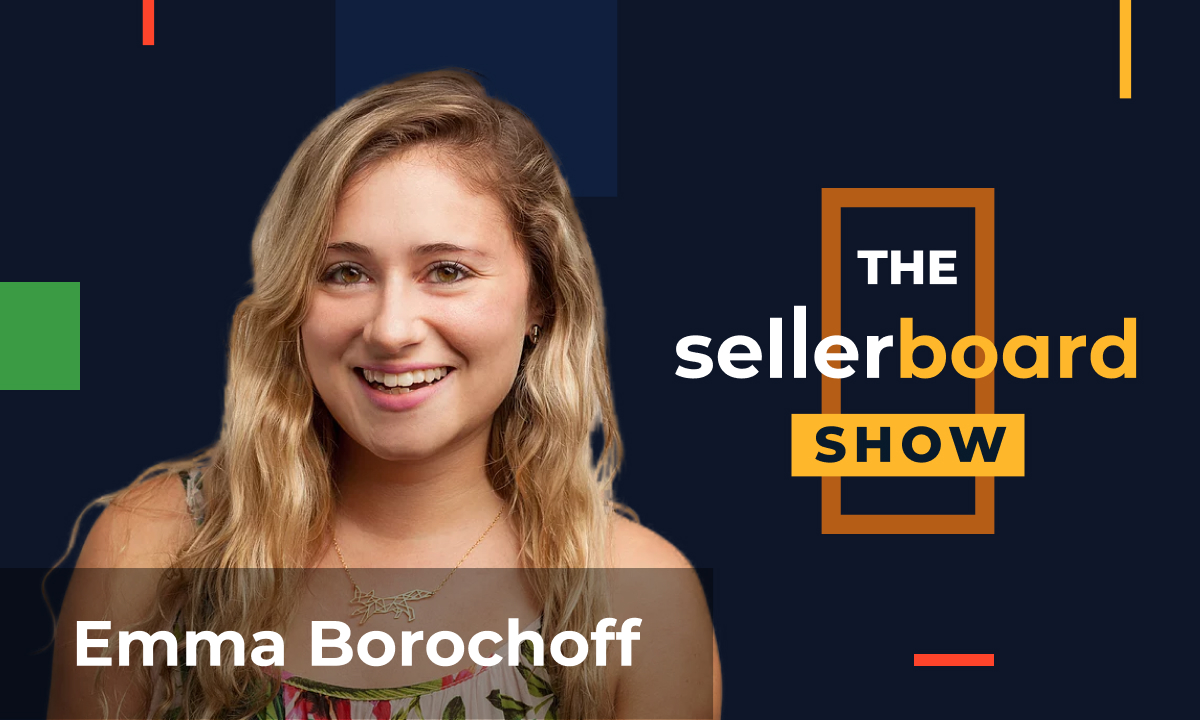Our guest on the 26th of October, 2020, on the sellerboard show was Meghla Bhardwaj from India Sourcing trip.
We talked about:
- How sourcing has changed in 2020
- It is important to diversify your suppliers
- Why is India interesting for Amazon sellers
- Sourcing hand made products from India
Watch the full video here: https://www.youtube.com/watch?v=eup8oyGPdBw
[00:00:08] Hey, everybody, welcome to the celebration. My name is Vladi Gordon. Today we have Megala from India sourcing trip with us and it’s the second part of our conversation today. We’re going to talk specifically about sourcing from India. So, as you probably know, most private label source in China, but there are alternatives. And I wanted to know, why would you even go to a different country than China? And what is India good at specifically? What categories and what are the advantages and how does it even work? There’s an infrastructure in China of shipping agents and sourcing agents and inspection and so on. And so how does this work in India?
[00:00:50] This is what we’re going to discuss today. So stay tuned. And don’t forget to press the like button and to subscribe to our channel before we start. If you don’t know what sellerboard is. Check out our home page sellerboard.com It’s The World’s Most accurate profit analytics tool, this is our vision and our vision is also to be the world’s most powerful financial tool for Amazon sellers. The prices start only at fifteen dollars a month, and there’s a free trial and a bunch of additional functionality in the package. For example, an inventory manager with a restock alert’s at PPC optimization module, which automates your bids to make sure you meet your profit targets for your PPC campaigns and a lot of other tools. So make sure you check out our homepage itself, board dot com. And now let’s get into the show.
[00:01:47] Ok, so let’s talk about India. When I was a seller, China was the only option. I live in Germany. I wanted to try to source something in Germany or actually in any different country than China. And I found it really annoying because there was no centralized website. Right. You go on Alibaba, you get everything you want to source from some different country. I didn’t know where to go. Why would you want to source from any other country than China?
[00:02:14] Yeah, so first of all, China is the world’s factory, right? All products are manufactured in China. And in fact, in terms of the product variety or the costs or the number of suppliers that are there, no other country comes even close to China. There are a couple of countries like India, Vietnam, that are emerging manufacturing hubs. So definitely China will be your main sourcing hub. However, there are other countries and one of the reasons why people are now looking to other countries is to diversify and to mitigate their risks. So, for example, when covid hit China initially, literally, the country was closed for three days or three months. Right. I mean, factories were not able to function, of course, those Chinese New Year. And then it was compounded with all of the lockdown’s in quarantine because of covid. And so that really shook up the sourcing world as such. I mean, the importers and all, they were kind of thinking that, OK, we do need to have kind of a backup if China goes down. So that’s one reason you never know what might happen. So you should have a backup also with a trade war that’s been going on between China and the US. Right. I mean, tariffs have been increasing. And so that’s another reason to look for another country where the relations between especially the US and that country are good. And the other thing that’s happening in China is that labor costs have been going up. So and this has been happening for the last, you know, like five to eight years or maybe even more.
[00:03:45] And as these labor costs have been increasing, in fact, a lot of the labor intensive production has been moving out of China over the last few years and it will continue to do so. So, for example, garment production, a garment is very labor intensive and that has been moving to countries like Bangladesh, Sri Lanka, Vietnam, Indonesia, and that has been happening for like 10 years or so. It’s nothing new. It’s gradually moving out even more. And then China is moving up the value chain. All of the cheap kind of low end basic production is going out to these other countries. And then China is moving up the value chain to produce more high tech kind of products. And then would have the other thing to consider is that there are some countries that specialize in certain categories that China does not produce at all. For example, India is really good with handmade products. So there are these beautiful, huge variety of handmade products like metal products or wooden products or fabrics or handloom fabrics, embroidered products. India is India has the best hand embroidered products in the whole world so that those are skills that India has that have been passed down from generation to generation. And these are artisans that are actually producing all of these handmade products. So if you want to position your brand as a premium brand, producing high quality handmade products and India is a place to go for that. Well, similarly, organic cotton, that is a very fast growing product in India. And in fact, there are more Gotz certified organic cotton factories in India than there are in China.
[00:05:22] And one of the reasons for that is India is one of the largest producers of cotton in the world. And so that’s another product category that you can consider from India. And you might find that the prices are also more competitive. Also, if you have a very labor intensive kind of product like handbags, for example, in some cases that also might be cheaper in countries like Vietnam and India. Now, Vietnam is actually positioning itself as a producer of a large variety of products. And one of the categories that’s coming up very fast is furniture. So there are these huge factories like gigantic factories that are being set up in Vietnam for furniture and appliances and plastic injection. Now, a lot of Amazon and e-commerce sellers are not really going to Vietnam because the Americans are really high, the factories are big there, and a lot of the factories are, in fact, you know, Chinese bosses and Chinese factories investing over there or Taiwanese companies investing there. But Vietnam is coming up as as a production hub. One of the reasons Amazon sellers find India interesting is because of the low end queues, because a lot of these products are handmade and, you know, suppliers are also very flexible. So you can get a small order of 200 to 300 pieces as well. Whereas in China, if you say two hundred pieces, they won’t even talk to you. Right. It’s usually like a thousand or three thousand pieces, four for most products. But in India, they’re more flexible with the Amoco’s. That’s another advantage.
[00:06:51] Very cool. So what would you would you like recommend for somebody who wants to start with India other than like a big, big supplier wants to diversify? I totally understand that.
[00:07:04] Like, if we’re talking about a big seller. So we’re talking about smaller sellers. Right. Would they go to India rather because of a category specific? Categories that.
[00:07:16] That’s right, yeah, yeah, definitely they would go to India for a category, they would go to India to diversify, even if they’re not sourcing a particular category from China currently, they could still go to India for that category to diversify their business. So just in case, one, you know, China supplies disrupted for whatever reason, at least they have another business that’s from India or another country.
[00:07:41] Ok, got it. So let’s start from the beginning. How do I find a supplier? India.
[00:07:46] Ok, so there are a couple of different ways, first of all, these supplier directories like Alibaba and Global Sources, they do have suppliers from other countries as well. In fact, global sources and Alibaba have offices in India and they’re very actively recruiting suppliers. So do a search on any of these websites and then use the supplier location, filter or supply a country filter and then you’ll find supplier. You can choose which country you want to see the suppliers from. So there’s Vietnam, India, Indonesia, all of these. There’s another directory in India called India Mart, which is like the local version of Alibaba. But I mean, there are manufacturers there. But at the same time, there are a lot of wholesalers and importers that actually distribute to the domestic market. So as much as possible, stay away from these websites from from India March because it is domestic focused. In fact, even the prices that are listed there are in the local currency. They’re not in US dollars, but you may be able to find good manufacturers there. You just have to look a bit harder and be a bit more cautious. It’s like the one six eight eight of India family is going to succeed. Yes, yeah. Yeah. So it’s similar to that. It’s like that. But it’s an English, of course. And then the other thing is that you can look for exhibitions.
[00:09:07] So there’s a fair called Delhi Fair that’s held in India and that is like the Canton Fair of India. And it has a lot of suppliers making home décor, apparel, organic kind of products, jewellery, fashion accessories, a wide range of product categories. So their exhibitor list is online. And so you just need to search for Exhibiter List Deleware and you’ll be able to see their list. I would suggest not to go. I mean, they’re also hosting a virtual fairs. So when they did a virtual tour in June and they’re hosting another one in November, but I would know you can go to their virtual fair. And because they are a government organisation, the organizers are actually it’s the Export Promotion Council for Handicrafts that organizes that fair. And only companies that are registered with this organisation can exhibit at the fair. So these are legitimate exporters, you know, because only if they are an exporter can they register with this council and exhibit at the fair. So that’s for sure that these are exporters, that legitimate companies. And then you can also just look for past exhibitor lists. So just search for exhibiter list and then you’ll see exhibiter list from last year. Well, those are the whole ways to start.
[00:10:21] Ok, suppose I found the supplier, right? How do I communicate with them as it is an email or, you know, sort of like a chat or. OK, obviously, if it’s through Alibaba, we can chat through Alibaba.
[00:10:34] But what’s like the normal for India suppliers?
[00:10:39] So generally, if you want to I mean, if you’re talking about a messaging platform, then it’s WhatsApp, usually they prefer that. But what I would suggest is so once you’re on Alibaba, you’ve done your search of maybe short listed, I don’t know, eight, you’ve send inquiries to eight or 10 suppliers. And then finally, you should shortlist three to five suppliers, I would say.
[00:10:57] And then what I, I personally do and what I suggest to people is to get on a video call with them, like nowadays, you know, Zoom is there I really strongly suggest to get on a call with the salesperson or whoever you’re talking to in India, if it’s a smaller company, are going to be talking to the owner or somebody higher up, but get on a call with them, you will be able to learn so much more about their company, the culture, the way they communicate their capabilities. And, you know, just by the way they talk and by the way they answer your questions and be able to learn a lot about how much they know about the product, how legitimate they are. Sometimes you’ll also be able to tell if they are a manufacturer or not of that specific product. So I strongly suggest to just get on a call and also tell them your story.
[00:11:44] I mean, you know, just tell them you’re in e-commerce, whatever. This is this and this is what your plan and these are you’re planning to build a brand or whatever. And then. Yeah, I mean, take it from there. So get on some call, give them your requirements and. Yeah, take it from there then.
[00:12:05] You know what, what about the infrastructure like in China, we have companies to do inspections in China, we have a lot of shipping agents and so there’s no problem to ship back can ship the samples from DHL, so and then the payment. So there are ways to pay them. So what? What about India? How do you solve these problems in India?
[00:12:25] Yeah, so India’s quite similar. So there is DHL, whatever. Usually what I do is I have my own corporate DHL account, so if I want to buy a sample from anywhere, China or India, I just give them my DHL account because I have good rates from DHL directly. And then DHL will just I mean, they will just use my account and then I will be billed for that. The sample is very straightforward and I mean, I prefer to pay for my samples as well. I mean, it’s not the actual sample, at least the shipping. So the same can work in India as well. Or you can ask the supplier to manage shipping for you. There are logistics companies as well. So once you finalize the order and the order is ready to be shipped, it can go by sea or air or courier. All the different options are available. You do need to make sure that you deal with a freight forwarder that is familiar with SBA because not all freight voters are familiar with that. And especially if you’re outside of the US and you’re sending products into the US, then things like you need an IOU are right to get products into the into the US because you are. So that’s the importer of record. US customs requires somebody to be the you. And so, you know, in China it’s set up really well.
[00:13:42] You just do DDP and then the supplier will manage everything with the freight forward and you don’t even need to worry about that. But in India, you know, not that common. But some suppliers can do that. But I, I would suggest to go with a separate freight forwarders that you have more control over your logistics costs as well. And then the freight forwarder can can arrange everything but make sure that they are familiar with FBA and how to send products to different warehouses and all that stuff. And yes, it’s pretty much the same as it works in in China. The only difference is that, you know, in China there are tens and thousands of such companies. In India, there may be fewer companies. So, yeah, just need to look for them or where they find an inspection company. So inspection companies are a couple of different options. One is the popular inspection companies like Keema or we trust they have offices in India, too, and they offer services in India. So I would suggest go with those companies. And then sometimes there are also these independent contractors or in the smaller sourcing companies. In fact, I run a Facebook group of four on India sourcing and I provide resources and lots of other things to people who are looking to source from India. And I have a vetted list of sourcing agents, service providers, straightforwardness.
[00:15:04] So in case anyone’s interested, they can join the Facebook group and send us the link and we’ll put the link in the description so everybody can enjoy join. Very cool. So tell us about your business and your sourcing trip. What what are your doing exactly and how does this work?
[00:15:24] Yes, so in the sourcing trip, unfortunately, thanks to covid, it’s on hold currently, but this is basically a guided tour for Amazon and e-commerce sellers, where we take them to India, we take them to the Delhi fair and we teach them how to source products from India effectively. This is a sourcing, learning and a cultural trip as well. So we also give people a taste of Indian culture. We go to Taj Mahal, which is one of the Seven Wonders of the world. We do a Bollywood style dance and everything, and we also do a conference. So we start with a full day conference where we teach people how to find suppliers, how to negotiate cultural sensitivities, all of those kinds of things. Then we take them to the fair for three days and then we also visit a factory over there in India. And yeah, it’s basically just a great experience where, you know, sellers from different countries get together. We have a few ecommerce coaches that join the group. So I’m not sure if you’re familiar with Tim Jordan from Private Label Legions that he’s one of the coaches on India sourcing trip and he himself sourcing from India as well. And we’ve got Gary Huang, Chris Thomas from Australia. CJ Rosenbaum was on the trip as well from Amazon Sellers lawyer. So, yeah, I mean, we just all get together, have fun and do some sourcing and we can’t wait to get back out to Cauvin.
[00:16:46] Do you have anything like any online equivalent of that or a conference or something on YouTube?
[00:16:55] Yes, yes, I do. So what I’ve started doing recently, in fact, for the last six months now, I’ve been hosting a monthly saucing show is called Virtual India Saucing Show, or this for short. And basically what I do is I interview manufacturers from India in the show. So it’s a monthly show. And every month I feature about five to ten suppliers and basically we just do live interviews with them. They show their products, talk about their story, and people can ask them questions. So it’s like a live show with suppliers. And then if people want to source from them, then they can reach out to them directly. So that’s something that I’ve been doing. And then apart from that, I’m also running a boot camp together with Tim Jordan. It’s called Product Discovery Boot Camp, and it’s basically a three day boot camp where, first of all, Tim talks about product research because that’s his expertise. And then I do one session on sourcing best practices. So whether it’s sourcing from India or China, we talk about that. So, yeah, that’s something else that people could consider.
[00:17:58] Well, awesome. So we’ll put all the links into the description and I’ll definitely subscribe to your to your sourcing. So very interesting. I’ve been to India once. Like, what city do you go to Bangalore and I’m an I.T. guy so we went to Bangalore. Yeah. It was like maybe eight years ago, but it was amazing. So I’ll definitely join join your trip, although we’re not selling ourselves, but I think it’s going to be fun.
[00:18:29] So first of all, again, I’d be willing to join that many. Fantastic. Cool.
[00:18:35] Thanks so much for for joining us. So if you have any questions to make a little more to us than post them in the comments and we’ll make sure they get answered.
[00:18:44] And yeah, good good luck with with your business. And thanks again for all those tips. I found it really, really valuable.
[00:18:53] Thank you so much for having me, Vladi. Take care. Bye.
[00:18:56] Take care. Bye bye. Thanks for watching, guys. Don’t forget to press the like button if you like this show and subscribe to our channel. We’re posting these videos regularly. I’ll see you soon. Bye bye.






